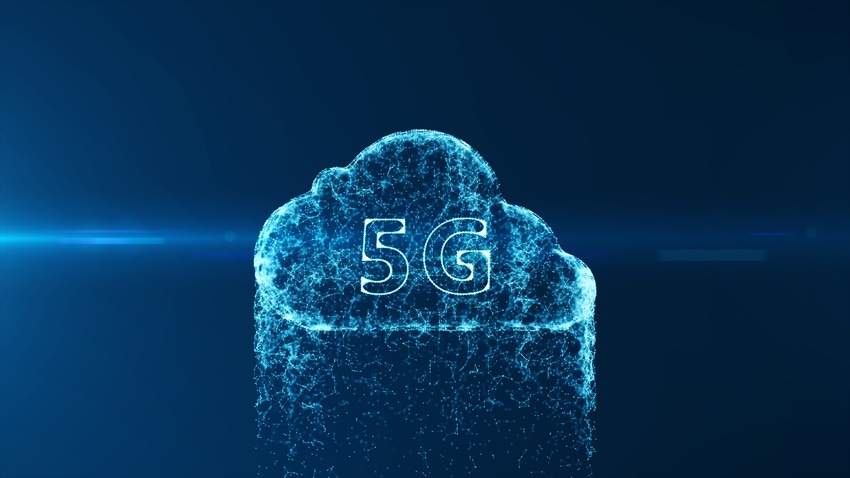To embrace and effectively deploy 5G services and respond to changing consumer demands, telco providers are prioritising investments in the multi-cloud.
October 31, 2022

Telecoms.com periodically invites expert third parties to share their views on the industry’s most pressing issues. In this piece Kalyan Kumar, Global Chief Technology Officer and Head of Ecosystems at HCL Tech, explores the increasing overlap between the telecoms industry and cloud providers.
The telecommunications industry is in the middle of a dramatic transformation. This is driven by several factors, including the adoption of the emerging 5G mobile network, the radical change in enterprise and personal infrastructure traffic patterns, and the pandemic-accelerated demand for distributed services, such as highly interactive mobile applications, from consumers.
The advent of new technologies and ways of working, such as augmented and virtual reality, the metaverse and Industry 4.0, has also accelerated the transformation of telcos. Communication service providers (CSPs) are driving the connectivity and real-time communication ability at the edge that will support this next era of work.
For this highly distributed environment to work in practice, you need a highly reliable, low-latency, and high throughput network that allows new and emerging technologies or services to converge. This convergence is only possible with 5G.
To embrace and effectively deploy 5G services and respond to changing consumer demands, telco providers are prioritising investments in the multi-cloud.
Multi-cloud at the edge
The term multi-cloud describes partnering with at least two public cloud providers or hyperscalers. It provides enterprises with the freedom to build and deploy any applications in any cloud, increasing their flexibility and portability.
As a result, enterprise cloud adoption through multiple hyperscalers is becoming much more common. In part, this is driven by the need for in-region sovereign clouds and localised hybrid cloud providers to ensure security and data access, while meeting local laws and regulations on data privacy and security.
Telcos are relying on the multi-cloud, because they are regulated by the country or region they’re operating in. They need the flexibility the multi-cloud offers to deliver services and connectivity in compliance with these local laws. A multi-cloud strategy at the network level can play a crucial role, assisting with fixed-wire connectivity, limited mobility, and full mobility.
The shift to multi-cloud is happening via three ways for telcos and other large enterprises:
Partnering with multiple hyperscalers, such as AWS, Microsoft, Google, and IT services companies – which can provide not only technology but also strategic insight to ensure deployments are successful.
The hybrid multi-cloud scenario, where workloads are deployed across multiple computing environments, including public cloud and private cloud. Private clouds usually run through existing on-premises data centers.
The edge, where ultra-low latency applications are deployed closer to where customer data is being generated, on or near internet-connected devices.
For telcos, a secure and resilient edge is central to the deployment of consistent 5G services that can help enterprise customers respond to changing customer needs and new ways of working. Going one step further, providing multi-access edge computing (MEC) can also enable the AI/ML tasks that provide greater intelligence on a network’s operations and ensure the delivery of high-bandwidth, low-latency applications on a distributed architecture.
Reaping the rewards
These types of deployments place a significant demand on the network. To overcome the risk of downtime, a modern digital infrastructure deployed across a multi-cloud environment is needed to ensure that services run effectively in this new distributed landscape.
Adopting a multi-cloud and edge strategy brings three tangible benefits:
Anywhere, anytime
Telcos will now be able to process data where it is being generated – at the edge. This increases accessibility and allows for the provisioning and tailoring of services in near real-time. This is particularly beneficial for IoT, which requires an intense amount of processing at the edge – such as the intelligent monitoring of traffic in a smart city.
Security and compliance
Even though the data is distributed across the edge and multi-cloud environment, this approach allows telcos to localise the way they want to secure that data and provides greater control of data governance and sovereignty – ensuring local regulation and compliance standards are met.
Choice
A multi-cloud strategy also gives flexibility to telcos and other enterprises. It allows them to have better choice and realise the benefits of different public cloud providers without being locked into a specific vendor.
Keeping one step ahead in the evolution of telco
In the telco world, today, many parts of the network still run on 2G and 3G, which can be difficult to ‘rip and replace’. As telcos increasingly embrace 5G, their aim is to reduce their reliance on legacy network infrastructure and simplify the network through virtualisation. This enables the provision of connectivity services and the delivery of new incremental value.
The whole transformation of the telco is happening both in operations and business services. It’s redefining how they operate their business services through simplifying their own network.
This is leading to a convergence between the CTO, or the network, and the CIO, or the IT infrastructure, in the telco – creating a new CTIO model. As well as simplifying operations, this new operating model means telco CTOs and CIOs are looking at virtualising their infrastructure and network services and adopting a DevOps style delivery model to be more agile, to ensure that the distributed network’s reliability isn’t compromised.
If they can fully embrace this new operating model, telcos will be in line not only to enjoy the benefits of 5G in the short-term, but also will be well-placed to embrace 6G and other technological innovations as they begin to emerge. Telcos ready to take advantage of the next big shift will be in line to steal a march on the rest of the pack in an increasingly competitive space.
 Kalyan Kumar (popularly known as “KK”) is the Global CTO & Head – Ecosystems for HCL Technologies. As Global CTO, KK plays a pivotal in defining Product & Technology Strategy, building strategic partner ecosystems, and blueprinting next-gen technology through startup exploration, incubation and open Innovation/open source. As the Head of Ecosystems, KK is responsible for all Cloud Ecosystem Units (AWS/Google/Microsoft/IBM-Redhat/SAP) as well as Tech OEM Ecosystem Units (Dell Tech/VMware/Cisco/Intel). KK also leads the company’s Cloud Offering – #HCLCloudSmart which includes Cloud Strategy, Industry Cloud Consulting, Offering Management and Cloud Native Labs network accelerating the journey to cloud across all the segments of HCL businesses.
Kalyan Kumar (popularly known as “KK”) is the Global CTO & Head – Ecosystems for HCL Technologies. As Global CTO, KK plays a pivotal in defining Product & Technology Strategy, building strategic partner ecosystems, and blueprinting next-gen technology through startup exploration, incubation and open Innovation/open source. As the Head of Ecosystems, KK is responsible for all Cloud Ecosystem Units (AWS/Google/Microsoft/IBM-Redhat/SAP) as well as Tech OEM Ecosystem Units (Dell Tech/VMware/Cisco/Intel). KK also leads the company’s Cloud Offering – #HCLCloudSmart which includes Cloud Strategy, Industry Cloud Consulting, Offering Management and Cloud Native Labs network accelerating the journey to cloud across all the segments of HCL businesses.
Get the latest news straight to your inbox. Register for the Telecoms.com newsletter here.
Read more about:
DiscussionAbout the Author(s)
You May Also Like








.png?width=300&auto=webp&quality=80&disable=upscale)


_1.jpg?width=300&auto=webp&quality=80&disable=upscale)


.png?width=800&auto=webp&quality=80&disable=upscale)